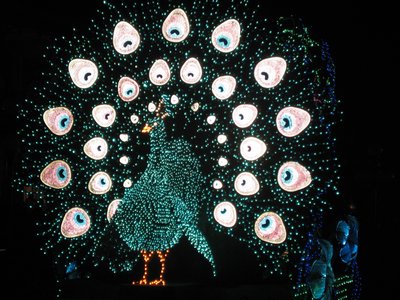If you have ever been to Walt Disney World, you have probably been delighted by the parades that march down the Main Street USA in the Magic Kingdom or wind around the streets of Disney’s Animal Kingdom. The parades are a joy to watch, but they are also a marvel of technology. While the technology is well hidden behind the scenes, it is critical to the magical form of entertainment that Disney does like no other – a Disney parade.
Music Helps Make The Parade
One of the most impactful aspects of a Disney parade is the music. It seems to come from every direction. And while many people do not realize it at a conscious level, the music changes as the parade moves down the street. If you are watching the Main Street Electrical Parade and you see a circus calliope, you also hear circus organ music. In the same way, if you see a parade of that represents scenes from The Little Mermaid, you will hear the sounds of bubbles in the Calypso music that makes up the trademark sound of that classic film.
All of this coordination seems to happen seamlessly. It works so well, you don’t even realize that it is happening. You simply enjoy the overall immersive experience that is created. But the timing, the technology, and the coordination that makes all of this happen is technically very complicated. It’s one of the reasons why Disney employees so many engineers of so many different kinds.
Don Dorsey’s Role In Parade Technology
One of the advancements Disney made in the timing of music to parade actions started with a consulting relationship that Don Dorsey had with the Disney Company way back in 1975. Don was hired by Disney to create the musical soundtrack for a new parade that celebrated America’s bicentennial called “American On Parade.” Don was unique in the music industry and that he was a pioneer in combining that sounds of music synthesizers (which were quite new at that time) with traditional musical instruments. After Don created a musical soundtrack for the parade, he continued his work in figuring out how to integrate the specific timing of the music with the various moving elements of a parade.

America On Parade had a 7 minute audio pre-show introduction. The idea was that as soon as the introduction ended, the parade floats should be arriving in front of guests. This was difficult to achieve because Disney had seven different audio zones for the floats. The introduction for the guests at the beginning of the parade route had to be played at a different time than the introduction for the guests at the end of the parade route. Otherwise, for the guests at the end of the parade route, there would be an introduction followed by a long period of nothing happening while the parade units made their way down the route.
For many months in the mid-seventies you could find Don standing on top of Disney buildings studying how the floats moved and providing directions to technicians who manually managed the music.
Main Street Electrical Parade 2.0
Disney was so pleased with don’s work on “America on Parade” that they hired him to rework the very popular of Main Street Electrical Parade. Don was made the Music Director and developed the new soundtrack for the parade. It was a tremendous showcase for Don’s groundbreaking work in synthesized music.
Don also wanted to do something new in the staging of the parade. With the original parade, you heard an introduction played and then heard a “fade in” of the continuing parade music. Don wanted something more dramatic. To make things more exciting, Don designed a fanfare that transitioned directly into the ongoing parade music without a break. He also designed a “lights out” on cue with the music. This had to happen in each parade zone, so that parade viewers would have the lights “go out” in their area followed very shortly by the first parade floats coming by. For example, when the parade starts in Frontierland, the light go out there and the first parade units start to move by. But those same first parade floats won’t make it to Main Street USA for several more minutes. So the lights need to stay on in Main Street until just the right time.

All of this required careful synchronization so that the audio components melded together seamlessly, and coordinated with lighting and the movement of the parade floats. The effect, called an “opening window”, worked so well that he has been used in nearly every Disney parade since its introduction.
Mickey Track Automates Parade Management
All of this leads to a terrific idea: why not automate this process with a computerized system that would perfectly coordinate the music and the parade floats? From this idea was born “Mickey Track” which is a computerized system that Don designed. It was first implemented in 1980 (Source).
Over the years the parade control system has been improved. It now includes all-digital audio and computer systems that make smart decisions about how to manage the parade. It uses sensors embedded in the street to track the movement of the floats, and controls the sound played by 200 different speakers in the buildings around the park.
“Mickey Track”, also known as DECS, it is now the company standard for the technical management of parades throughout all Disney Parks around the world. Don continues his consulting career with organizations ranging from Disney to Universal, from Sea World to Suzuki (Source).
If you enjoy the music, the technology, and the artistry that are presently flawlessly day after day in Disney parades, you can thank Don Dorsey – and Mickey Track.

